It’s 2011 — NASA’s Year of the Solar System! Join us on a cosmic road trip to explore solar system mysteries and share in the thrill of discovery at an exciting new workshop for educators of all grade levels.
NASA’s Discovery and New Frontiers missions are traveling vast distances to find answers to age-old questions. These celestial detectives are revealing how our solar system formed and evolved, doing brilliant science with “way cool” technologies!
• See sights never before seen on Mercury: MESSENGER!
• Get up close to asteroids and comets: Dawn, Stardust-NExT and EPOXI!
• Map the moon’s gravity with twin satellites: GRAIL!
• Peer through Jupiter’s clouds: Juno!
• Cruise to the outer reaches of the solar system: New Horizons!
Hear from mission scientists and engineers, discover engaging activities for grades K-12 classrooms and out-of-school time programs, and receive a resource book loaded with activities and links.
Details
When: Saturday, March 19, 9 a.m. to 2 p.m. at each location listed below.
Where:
• NASA’s Jet Propulsion Laboratory, Pasadena, Calif.
• NASA’s Johnson Space Center, Houston, Texas.
• Jackson Middle School Observatory, Champlin, Minn.
• Johns Hopkins University Applied Physics Laboratory, Laurel, Md.
Cost: $25 (lunch and snacks included).
Special Speakers
- Six years after launch, MESSENGER will enter orbit around Mercury on March 18. We are very fortunate to have Dr. Sean Solomon, MESSENGER’s Principal Investigator, tell us about the mission’s goals, the science findings so far, and the excitement of reaching the orbiting phase of the mission.
- The Dawn mission uses ion propulsion to visit the two largest objects in the asteroid belt. Launched in September 2007, Dawn will arrive at asteroid Vesta this July for a year-long orbit. Dawn’s Chief Engineer, Dr. Marc Rayman, will share why this mission is so unique and what scientists hope to learn.
- Juno’s quest is to aid in the understanding of the formation and evolution of Jupiter, which will help us comprehend the origin of the entire solar system. Juno will launch this August. Dr. Ravit Helled from the gravity team tells us how Juno will reveal “the giant planet story.”
Watch the speakers on the free webinar if you can’t be at one of the sites.
 Next month, MESSENGER will execute a 15-minute maneuver. placing the spacecraft into orbit around Mercury. It will be the first spacecraft ever to orbit the solar system’s innermost planet. Check out the MESSENGER module Staying Cool — My Angle on Cooling to prepare your students for this event.
Next month, MESSENGER will execute a 15-minute maneuver. placing the spacecraft into orbit around Mercury. It will be the first spacecraft ever to orbit the solar system’s innermost planet. Check out the MESSENGER module Staying Cool — My Angle on Cooling to prepare your students for this event.
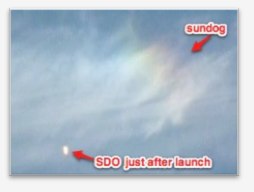 “It’s a new form of ice halo,” says atmospheric optics expert Les Cowley of England. “We saw it for the first time at the launch of SDO–and it is teaching us new things about how shock waves interact with clouds.”
“It’s a new form of ice halo,” says atmospheric optics expert Les Cowley of England. “We saw it for the first time at the launch of SDO–and it is teaching us new things about how shock waves interact with clouds.”
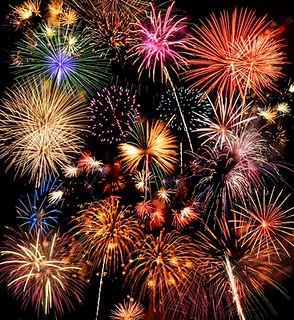 This week,the NASA Explorer Schools project enrolled its 1,000th participant. The projectincludes educators from schools in all 50 states, Washington, D.C., Puerto Rico,plus a U.S. State Department/Department of Defense school in Turkmenistan.That’s quite an accomplishment!
This week,the NASA Explorer Schools project enrolled its 1,000th participant. The projectincludes educators from schools in all 50 states, Washington, D.C., Puerto Rico,plus a U.S. State Department/Department of Defense school in Turkmenistan.That’s quite an accomplishment!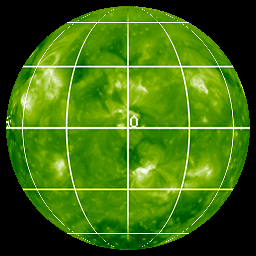 This movie shows a spherical map of the Sun, formed from a combination of STEREO Ahead and Behind beacon images, along with an SDO/AIA image in between. The movie starts with the view of the Sun as seen from Earth, with the 0 degree meridian line in the middle. The map then rotates through 360 degrees to show the part of the Sun not visible from Earth. The black wedge shows the part of the Sun not yet visible to the STEREO spacecraft.
This movie shows a spherical map of the Sun, formed from a combination of STEREO Ahead and Behind beacon images, along with an SDO/AIA image in between. The movie starts with the view of the Sun as seen from Earth, with the 0 degree meridian line in the middle. The map then rotates through 360 degrees to show the part of the Sun not visible from Earth. The black wedge shows the part of the Sun not yet visible to the STEREO spacecraft.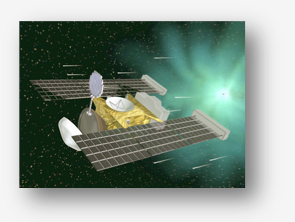 On Feb. 14, 2011, NASA’s Stardust-NExT (New Exploration of Tempel 1) mission will encounter Comet Tempel 1, providing a unique opportunity to measure the dust properties of two separate comets (Wild 2 and Tempel 1) with the same instrument for accurate data comparison. The encounter also will provide a comparison between two observations of a single comet, Tempel 1, taken before and after a single orbital pass around the sun.
On Feb. 14, 2011, NASA’s Stardust-NExT (New Exploration of Tempel 1) mission will encounter Comet Tempel 1, providing a unique opportunity to measure the dust properties of two separate comets (Wild 2 and Tempel 1) with the same instrument for accurate data comparison. The encounter also will provide a comparison between two observations of a single comet, Tempel 1, taken before and after a single orbital pass around the sun.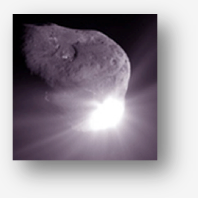 NASA’s Deep Impact mission observed Comet Tempel 1 in the summer of 2005, as the comet was inbound toward the sun on its approximately 5.5-year orbit between Mars and Jupiter. Deep Impact’s primary mission was to deliver a special impactor spacecraft into the path of Comet Tempel 1. The spacecraft — and many ground-based observers — observed the impact and the ejected material. Scientists were surprised the cloud was composed of a fine, powdery material, not the expected water, ice and dirt. The spacecraft did find the first evidence of surface ice on a comet instead of just inside a comet.
NASA’s Deep Impact mission observed Comet Tempel 1 in the summer of 2005, as the comet was inbound toward the sun on its approximately 5.5-year orbit between Mars and Jupiter. Deep Impact’s primary mission was to deliver a special impactor spacecraft into the path of Comet Tempel 1. The spacecraft — and many ground-based observers — observed the impact and the ejected material. Scientists were surprised the cloud was composed of a fine, powdery material, not the expected water, ice and dirt. The spacecraft did find the first evidence of surface ice on a comet instead of just inside a comet.